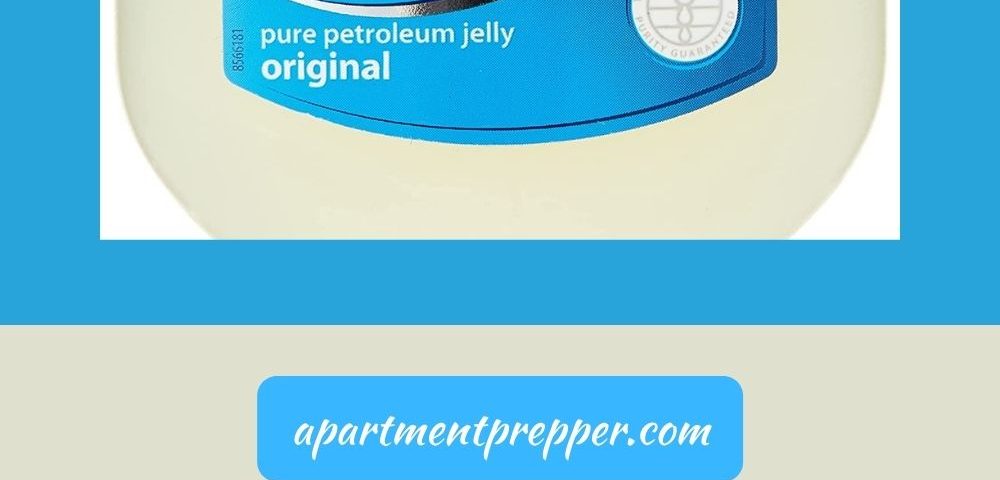Written by Bernie Carr
Petroleum jelly has gotten a bad reputation in recent years. When people hear the word petroleum they immediately think that must be bad. But if you really look into it, petroleum jelly has a lot of emergency uses.
What is petroleum jelly?
Petroleum jelly was discovered back in 1859, when workers at oil drilling rigs noticed “black rod wax,” a byproduct of the oil-drilling process, was useful as a cleanser and moisturizer. In 1870, a chemist named Robert Augustus Chesebrough started refining and packaging the substance. He named it Vaseline and it is still in use today.
The original waxy material is triple purified to create petroleum jelly. It is now considered hypo-allergenic. Doctors and hospitals still use it today. It’s worthwhile to consider the survival uses of petroleum jelly.
Survival uses of petroleum jelly
Firestarter
Petroleum jelly will not actually catch fire on its own; it will just melt. But cotton balls coated with petroleum jelly are great for fire-starting. They are also very easy to make. Simply swipe petroleum jelly on each cotton ball and store in a jar or plastic bag. Place the coated cotton balls among tinder and wood and light to get the fire started.
Homemade light
You can make a makeshift “candle” with some petroleum jelly and a wick.
Moisturize skin
Help your chapped, windburned skin with a bit of petroleum jelly. You can also use it on chapped lips. I’ve used it successfully on dry, cracked heels to prevent them from developing cuts. For personal or medicinal use, I’d prefer to use the name brand Vaseline instead of generic, as you are assured that it has been triple-purified.
Wound sealer
Apply petroleum jelly on minor wounds to keep germs out.
Prevent chaffing
If you had to travel on foot for long distances, put petroleum jelly on sensitive areas to prevent blisters. You can also place it on other areas to prevent chaffing.
Lubricant
Does your key keep getting stuck in the lock? Apply some petroleum jelly to keep it from sticking.
If your ring is stuck to your finger, apply petroleum jelly to the area, so you get it under the ring as much as possible.
Fix a sticky zipper with a bit of petroleum jelly.
Protectant
Apply petroleum jelly on leather shoes to renew and protect them. You can also use it to lubricate infrequently used tools to prevent rust.
Tip: This is not really an emergency use, but it is a practical one: When applying hair dye, I’ve seen hairdressers apply a bit of Vaseline around the forehead, ears and the name of the neck just below the hairline to prevent excess hair color from seeping into the skin. After the hair coloring is done, wipe it off with a tissue.
Make razor blades last longer: after use, dry the razor and dab a small amount of petroleum jelly on the blade.
Cleanser
If you find yourself needing to clean your hands but are low on water for washing, use petroleum jelly to clean off dirt and grease. Wipe with a cloth or paper.
Multi-purpose items are worth having in your emergency kit. They also help you save money. Petroleum jelly is one item that has multiple uses.
If you found this article interesting or helpful, please consider helping us out (without costing you anything)! We are an affiliate of Amazon.com, which means we received a small commission if you click through one of our Amazon links when you shop, at totally no cost to you. This helps keep the lights on at the blog. Thanks!
Bernie Carr is the founder of Apartment Prepper. She has written several books including the best-selling Prepper’s Pocket Guide, Jake and Miller’s Big Adventure, The Penny-Pinching Prepper and How to Prepare for Most Emergencies on a $50 a Month Budget. Bernie’s latest e-book, FRUGAL DIY has just been released on Amazon. Her work appears in sites such as the Allstate Blog and Clark.com, as well as print magazines such as Backwoods Survival Guide and Prepper Survival Guide. She has been featured in national publications such as Fox Business and Popular Mechanics. Learn more about Bernie here.



One comment